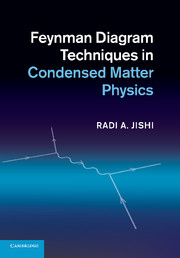Book contents
- Frontmatter
- Contents
- Preface
- 1 A brief review of quantum mechanics
- 2 Single-particle states
- 3 Second quantization
- 4 The electron gas
- 5 A brief review of statistical mechanics
- 6 Real-time Green's and correlation functions
- 7 Applications of real-time Green's functions
- 8 Imaginary-time Green's and correlation functions
- 9 Diagrammatic techniques
- 10 Electron gas: a diagrammatic approach
- 11 Phonons, photons, and electrons
- 12 Superconductivity
- 13 Nonequilibrium Green's function
- Appendix A Second quantized form of operators
- Appendix B Completing the proof of Dzyaloshinski's rules
- Appendix C Lattice vibrations in three dimensions
- Appendix D Electron-phonon interaction in polar crystals
- References
- Index
4 - The electron gas
Published online by Cambridge University Press: 05 April 2013
- Frontmatter
- Contents
- Preface
- 1 A brief review of quantum mechanics
- 2 Single-particle states
- 3 Second quantization
- 4 The electron gas
- 5 A brief review of statistical mechanics
- 6 Real-time Green's and correlation functions
- 7 Applications of real-time Green's functions
- 8 Imaginary-time Green's and correlation functions
- 9 Diagrammatic techniques
- 10 Electron gas: a diagrammatic approach
- 11 Phonons, photons, and electrons
- 12 Superconductivity
- 13 Nonequilibrium Green's function
- Appendix A Second quantized form of operators
- Appendix B Completing the proof of Dzyaloshinski's rules
- Appendix C Lattice vibrations in three dimensions
- Appendix D Electron-phonon interaction in polar crystals
- References
- Index
Summary
All exact science is dominated by the idea of approximation.
Bertrand RussellA metallic crystal has a large number of mobile electrons, of the order of Avogadro's number, and a correspondingly large number of ions. If our interest is in the bulk properties of a crystal, we may take the volume V of the crystal to be infinite, and the number of electrons N to be infinite, while keeping N/V, the number density of electrons, finite; this is called the thermodynamic limit. The ions incessantly vibrate about their equilibrium positions, but due to their large mass, they move very slowly in comparison with the electrons, so that the electrons quickly adjust their state to reflect whatever positions the ions occupy at any given time. Consequently, to a good approximation, one may solve the Schrödinger equation for electrons by assuming that the ions are fixed; this is the Born–Oppenheimer approximation. The influence of the ionic vibrations on the electronic states, described through the electron–phonon interaction, may be treated by perturbation theory; this is discussed in Chapter 11.
A more drastic approximation in the description of a metal is to replace the mesh of positive ions with a uniform positive background, which results in the so-called jellium model. In a model such as this, any results obtained are necessarily qualitative in nature. In this chapter, we study the jellium model. One of our goals in this study is to show that the divergent term in the Coulomb interaction, corresponding to q = 0 (see Eq. [3.29]), is cancelled by contributions to the total energy from the positive background.
- Type
- Chapter
- Information
- Feynman Diagram Techniques in Condensed Matter Physics , pp. 65 - 77Publisher: Cambridge University PressPrint publication year: 2013



